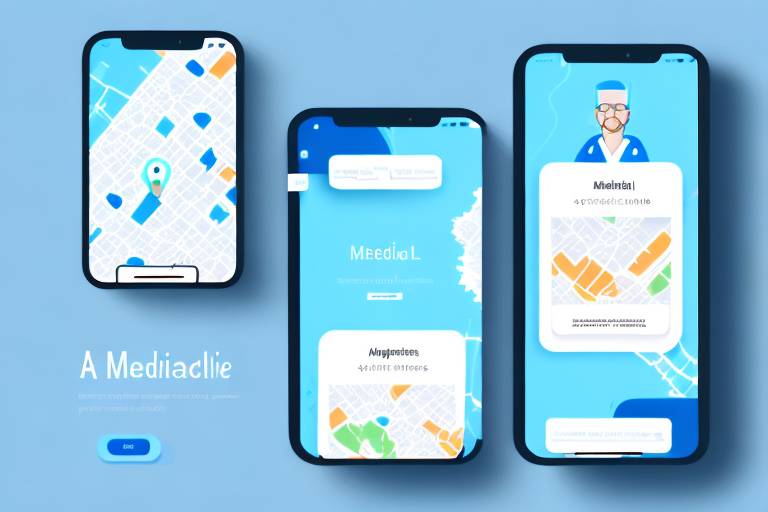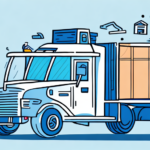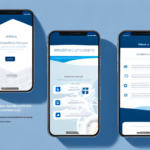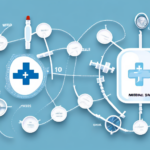Introduction to Medical Supplies Delivery Apps
The healthcare industry is rapidly evolving, with technology playing a pivotal role in enhancing efficiency and patient care. One significant advancement is the adoption of medical supplies delivery apps. These applications streamline the ordering and delivery of medical supplies, enabling healthcare providers to save time, reduce costs, and improve patient outcomes. This guide offers an in-depth analysis of using a medical supplies delivery app, covering its functionality, importance in healthcare delivery, and criteria for selecting the right app for your organization.
How Medical Supplies Delivery Apps Operate
Streamlined Ordering Process
Medical supplies delivery apps serve as a centralized platform where healthcare providers can place orders from a wide range of vendors. By simplifying the ordering process, these apps reduce administrative burdens and minimize the chances of errors.
Real-Time Tracking and Inventory Management
Advanced features such as real-time tracking ensure that orders are delivered promptly and accurately. Inventory management tools help healthcare facilities maintain optimal stock levels, preventing shortages of critical supplies. According to a McKinsey report, digital inventory management can reduce stockouts by up to 30%.
Secure Payment Gateways
These apps incorporate secure payment systems, allowing for safe and efficient transactions. This not only expedites the payment process but also enhances financial tracking and accountability.
The Significance of Delivery Apps in Healthcare
Enhancing Efficiency and Reducing Costs
By automating the ordering and delivery process, medical supplies delivery apps help healthcare providers cut down on administrative costs and reduce the time spent on procurement tasks. This efficiency translates into better resource allocation and improved patient care.
Ensuring Timely Delivery of Supplies
Timely delivery is crucial in healthcare settings, especially during emergencies. Delivery apps ensure that essential medical supplies reach their destinations promptly, which can be life-saving in critical situations.
Improving Inventory Management
Effective inventory management facilitated by these apps helps healthcare providers maintain adequate stock levels, reducing the risk of running out of essential items. This is particularly important in high-demand scenarios such as during a pandemic.
Key Features of Top Medical Supplies Delivery Apps
User-Friendly Interface
A intuitive and easy-to-navigate interface ensures that users can place orders quickly and efficiently without extensive training.
Comprehensive Product Catalog
The best apps offer a wide range of medical supplies from various reputable vendors, providing healthcare providers with multiple options to meet their specific needs.
Inventory Integration
Integration with existing inventory management systems, such as inventory management systems, allows for seamless operations and better stock control.
Real-Time Notifications
Notifications about order status, delivery updates, and inventory levels keep healthcare providers informed, enabling better planning and coordination.
Secure Payment and Billing
Robust security measures protect sensitive financial information, and flexible billing options cater to diverse financial workflows.
Choosing the Right Medical Supplies Delivery App
Assessing Compatibility and Integration
Ensure that the app integrates smoothly with your organization's existing systems, such as electronic health records (EHR) and inventory management platforms. This integration minimizes disruptions and enhances workflow efficiency.
Evaluating Features and Functionality
Identify the features that are most critical to your organization, such as real-time tracking, automated reordering, and comprehensive reporting capabilities.
Considering Pricing Models
Different apps offer various pricing structures, including subscription-based models, pay-per-order, or tiered pricing. Evaluate which model aligns best with your organization's budget and usage patterns.
Reviewing User Feedback and Ratings
Research reviews and ratings from other healthcare providers to gauge the app's reliability, user satisfaction, and customer support quality. Websites like Capterra offer valuable insights and user experiences.
Evaluating Customer Support
Reliable customer support is essential for resolving technical issues and ensuring smooth app operations. Look for apps that offer 24/7 support and have a dedicated support team.
Implementing and Navigating the App
Setting Up Your Account
The initial setup typically involves entering your organization's details, configuring payment methods, and setting up delivery preferences. Some apps may require additional verification, such as providing licenses or certifications.
Training and Onboarding
To maximize the app's benefits, provide training sessions and resources for your staff. Many apps offer tutorials, webinars, and customer support to assist with onboarding.
Using the User Interface
Familiarize yourself with the app's dashboard, search functionalities, and ordering processes. A well-designed interface allows for efficient navigation and order management.
Managing Orders and Deliveries
Placing and Tracking Orders
Use the app to browse the product catalog, place orders, and track delivery status in real-time. Accurate order placement ensures timely and correct deliveries.
Automated Reordering and Subscriptions
Set up automated reordering for frequently used supplies to maintain consistent stock levels. Subscription services can be particularly beneficial for items that are regularly needed.
Receiving Notifications and Updates
Stay informed with notifications about order confirmations, shipping status, and delivery estimates. This information allows for better planning and reduces the likelihood of unexpected shortages.
Payment and Billing Processes
Flexible Payment Options
Choose an app that offers multiple payment methods, including credit cards, electronic transfers, and invoicing. Flexibility in payment options can streamline financial processes.
Transparent Billing Practices
Ensure that the app provides clear and detailed billing statements, helping you track expenses and manage budgets effectively.
Secure Transactions
Robust security protocols protect financial data during transactions, safeguarding your organization's sensitive information.
Troubleshooting and Support
Accessing Support Resources
Most apps provide a comprehensive knowledge base, FAQs, and support ticket systems to address common issues and technical challenges.
Reporting and Resolving Issues
If you encounter problems, promptly report them through the app's support channels. Quick resolution minimizes disruptions to your supply chain and healthcare delivery.
Continuous Improvement and Updates
Stay updated with the latest app enhancements and features, which can improve functionality and address any previous shortcomings.
Benefits and Challenges
Advantages
- Efficiency: Streamlined ordering and delivery processes reduce administrative workload.
- Cost Savings: Automated inventory management and bulk ordering can lead to significant cost reductions.
- Improved Patient Care: Timely access to essential medical supplies ensures better patient outcomes.
- Data Insights: Analytics and reporting features provide valuable insights into supply usage and trends.
Disadvantages
- Technical Issues: Dependence on technology means that technical glitches can disrupt supply chains.
- Security Risks: Handling sensitive data requires robust security measures to prevent breaches.
- Initial Setup Costs: Implementing a new system may involve upfront costs and resource allocation.
Case Studies: Successful Implementations
Enhancing Supply Chain Efficiency at St. Mary’s Hospital
St. Mary’s Hospital integrated a medical supplies delivery app into their procurement system, resulting in a 25% reduction in supply-related costs and a 40% decrease in delivery times. This improvement allowed the hospital to allocate more resources to patient care.
Streamlining Operations at City Health Clinic
City Health Clinic adopted a delivery app that seamlessly integrated with their electronic health records (EHR) system. This integration enabled automatic reordering of supplies based on patient intake data, ensuring that the clinic never faced critical shortages.
Future Trends and Innovations
Integration of Artificial Intelligence
AI will play a significant role in optimizing order processing, predicting supply needs, and enhancing delivery logistics. Predictive analytics can foresee shortages and automate reordering processes more accurately.
Expansion of Product Catalogs
Future apps will likely include a broader range of medical equipment and devices, providing healthcare providers with a one-stop-shop for all their needs.
Enhanced Data Security Measures
As cyber threats evolve, medical supplies delivery apps will strengthen their security protocols to protect sensitive healthcare and financial data.
Integration with Telehealth Services
Combining delivery apps with telehealth platforms can create a more cohesive healthcare ecosystem, enabling seamless coordination between virtual consultations and supply management.
Conclusion: Transforming Healthcare Delivery with Medical Supplies Delivery Apps
Medical supplies delivery apps are revolutionizing healthcare delivery by enhancing efficiency, reducing costs, and ensuring timely access to essential supplies. By selecting the right app and effectively integrating it into their operations, healthcare providers can improve patient outcomes and streamline their supply chains. As technology continues to advance, these apps will become increasingly sophisticated, offering even greater benefits to the healthcare industry.




















